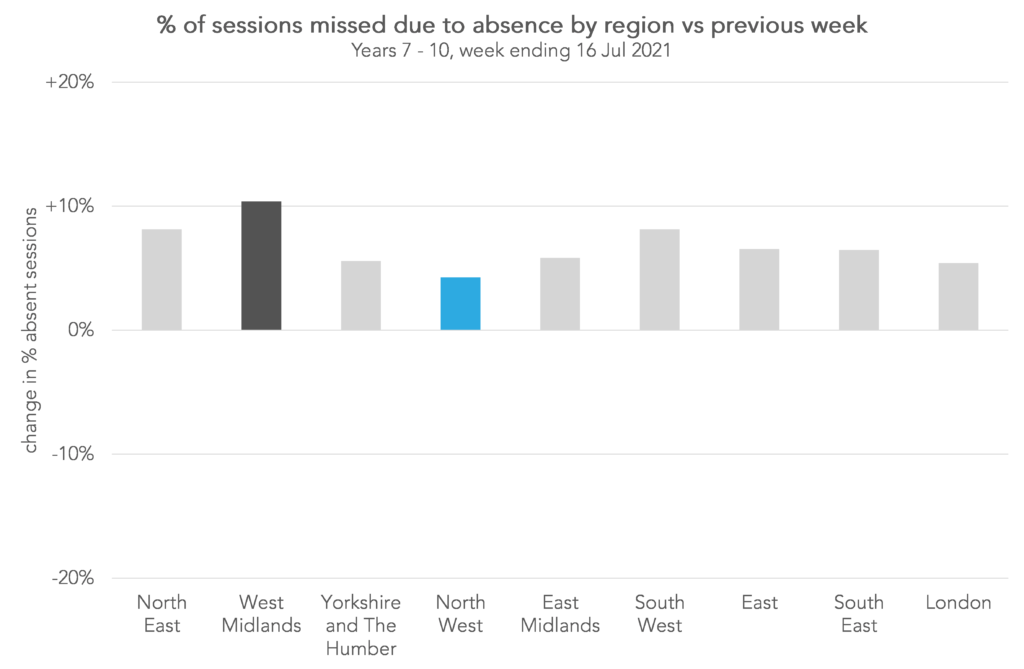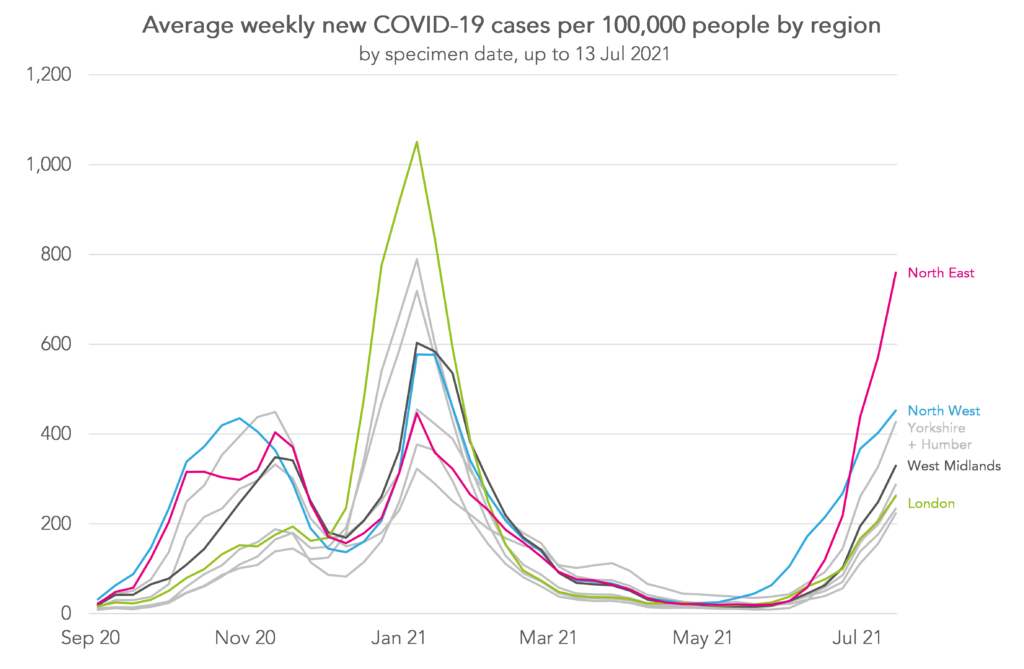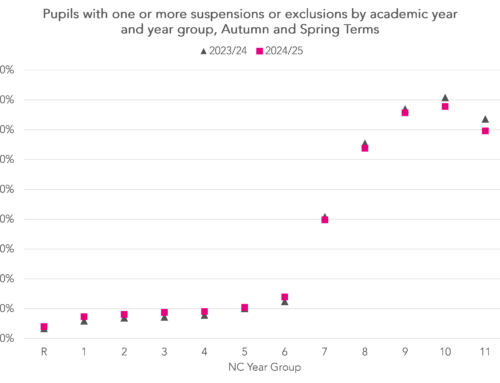Last week’s post showed a surge in absences across the country, particularly in the North East. In this blogpost we look at school absence data up to the end of last week for secondary school pupils in Years 7 to 10 to see how things have changed.
Aspire Attendance Tracker
Schools can track, analyse and compare their attendance data against 1,000s of other FFT schools using Aspire Attendance Tracker.
Log in to Aspire to access Attendance Tracker – log in here.
Not an FFT Aspire user? Learn more here.
Firstly, a definitional note. When we talk about “absences,” we mean any missed sessions. Where we distinguish between sessions missed for COVID isolation or quarantine reasons and other reasons we will say “COVID absences” and “other absences.”
One thing to note is that our data is being read directly from our schools’ registers, meaning that our classification of absences into “COVID” and “other” depends on the attendance codes the schools are using[1]. This is in contrast to the DfE’s weekly updates which are collected via survey, allowing schools to add extra context beyond what’s in the register.
Overall picture: absence by Year group…
Unsurprisingly, absences were up again compared with the previous week: pupils missed 28% of sessions last week, on average, compared with 21% in the previous week, and 17% the week before. For all year groups, absences due to COVID isolation and quarantine, and absences due to other reasons were both at the highest levels of any week this academic year outside of lockdown (18% of sessions were missed because of COVID, up from 13% the previous week, and 10% due to other reasons, up from 8% the previous week.)
For context, in 2018/19 the average absence rate in secondary schools in Summer term was around 6%.

Once again, and as expected from our previous blogposts on the topic where we showed that older students have been affected disproportionately by absence during the pandemic, Year 10 had the highest absence rates and Year 7 the lowest, though both increased last week, driven mostly by COVID isolation and quarantine absences. Year 10 missed 32% of sessions last week, and Year 7 missed 24%.
… and in the regions
We saw in last week’s post that absence rates varied substantially by region. This remains true.


Unfortunately, it’s not good news in general nor for the North East in particular, where already high levels of absence have increased again. 44% of sessions were missed in the North East last week (up from 37% the previous week), with 31% missed due to COVID isolation and quarantine. In contrast, London remains the region with the lowest levels of absence, though still saw an overall absence rate of 21% (up from 15% the previous week) and a COVID absence rate of 12%. All regions saw increases in absence this week, with the biggest rise in the West Midlands (+10%).
Looking at the case rates in these regions, we can see the relationship between local case rates[2] and school absence rates clearly. In the North East, both absence and case rates are highest by some margin, and regions with lower absence rates also have lower case rates.

Change in regional absence over time

We saw in the Autumn term how schools in the north initially had higher absence rates but this changed dramatically towards the end of term as the alpha variant of COVID took hold, and we saw last week that there had been a similarly dramatic acceleration recently. Adding in last week’s data, we see a further unwelcome rise for the North East, where absence levels remain above those recorded in London and the South East towards Christmas, and we see Yorkshire and the Humber, the West Midlands and the North West accelerating to join them.
Again, we see these patterns of absence reflected in local COVID case rates.
Summing up
In what will have been a difficult final week for many schools (and likely a difficult penultimate week for others), absences increased to the highest levels seen this academic year, surpassing those seen in the run-up to Christmas. This has been driven by COVID isolation and quarantine in regions with high COVID case rates, particularly the North East.
- The DfE’s guidance advises schools to record pupils unable to attend due to COVID as “not attending in circumstances related to coronavirus”. This includes pupils who were self-isolating, pupils who were advised to shield because they were clinically extremely vulnerable, pupils quarantining after returning from abroad and class bubbles who were sent home and advised to isolate. Schools were advised to record pupils with a confirmed case of coronavirus as absent due to illness.
- Source: https://api.coronavirus.data.gov.uk/v2/data?areaType=region&metric=newCasesBySpecimenDateRollingRate&format=csv&release=2021-07-18
Want to stay up-to-date with the latest research from FFT Education Datalab? Sign up to Datalab’s mailing list to get notifications about new blogposts, or to receive the team’s half-termly newsletter.






Leave A Comment